The start of our 2022 Anthology and Microfiction Competition submission windows is just around the corner, so we thought we'd introduce you to this year's editor and let you in on the 2022 theme.
We are delighted to announce that the 2022 National Flash Fiction Day anthology will be edited by NFFD's Karen Jones and Guest Editor Chris Drew.
The theme of this year's National Flash Fiction Day Anthology is FREEDOM.
What do you think of when you think of freedom? Freedom from, freedom to do, freedom to be?
Does your mind go to prisons and zoos or to protest marches and politics or to leaving the office on a Friday, packing a bag and heading off on holiday? Or is it simply freedom of thought? Or is it George Michael belting out that classic? But maybe you have a very different view of freedom; go on, surprise us!
Feel free to interpret FREEDOM however you wish, in 500 words or fewer, and submit your stories by 15 February 2022.
We'll be opening submissions on 1 December 2021, at which time you'll be able to read our full anthology submission guidelines here or on Duosuma.
We're looking forward to reading your work!
2022 National Flash Fiction Day Anthology Editors
Anthology Submissions are open from 1 December 2020 to 15 February 2022.
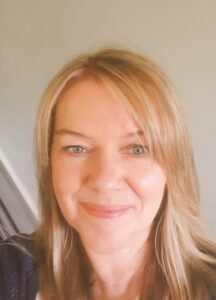 Karen Jones is a flash and short story writer from Glasgow, Scotland. Her flashes have been nominated for Best of the Net, Best Micro Fiction and The Pushcart Prize, and her story Small Mercies was included in Best Small Fictions 2019 and BIFFY50 2019. In 2021 she won first prize in the Cambridge Flash Fiction Prize, Flash 500, Reflex Fiction and Retreat West Monthly Micro and was shortlisted for To Hull and Back, Bath Flash Fiction, Bath Short Story Award and longlisted for Fractured Lit Flash Fiction Prize. Her work has been published in numerous anthologies and magazines. Her novella-in-flash, When It’s Not Called Making Love is published by Ad Hoc Fiction. She is Special Features Editor at New Flash Fiction Review.
Karen Jones is a flash and short story writer from Glasgow, Scotland. Her flashes have been nominated for Best of the Net, Best Micro Fiction and The Pushcart Prize, and her story Small Mercies was included in Best Small Fictions 2019 and BIFFY50 2019. In 2021 she won first prize in the Cambridge Flash Fiction Prize, Flash 500, Reflex Fiction and Retreat West Monthly Micro and was shortlisted for To Hull and Back, Bath Flash Fiction, Bath Short Story Award and longlisted for Fractured Lit Flash Fiction Prize. Her work has been published in numerous anthologies and magazines. Her novella-in-flash, When It’s Not Called Making Love is published by Ad Hoc Fiction. She is Special Features Editor at New Flash Fiction Review.
 Christopher M Drew is a writer from Yorkshire. He started submitting flash fiction in 2015 and since then has been published widely in online journals and print anthologies. He has won second prize in the Bath Flash Fiction (2016), Reflex Fiction (2018), and Forge Literary Flash Fiction (2019) competitions. His SmokeLong Quarterly story Alligator was selected for Best British and Irish Flash Fiction 2019, and When we were young, originally published in trampset, was selected for Best Microfiction 2021. He has been nominated for Best Small Fictions and Best of the Net, and was one of the founding editors of the historical flash fiction journal FlashBack Fiction. You can connect with Chris on Twitter (@cmdrew81), or through his website (https://chrisdrew81.wixsite.
Christopher M Drew is a writer from Yorkshire. He started submitting flash fiction in 2015 and since then has been published widely in online journals and print anthologies. He has won second prize in the Bath Flash Fiction (2016), Reflex Fiction (2018), and Forge Literary Flash Fiction (2019) competitions. His SmokeLong Quarterly story Alligator was selected for Best British and Irish Flash Fiction 2019, and When we were young, originally published in trampset, was selected for Best Microfiction 2021. He has been nominated for Best Small Fictions and Best of the Net, and was one of the founding editors of the historical flash fiction journal FlashBack Fiction. You can connect with Chris on Twitter (@cmdrew81), or through his website (https://chrisdrew81.wixsite.
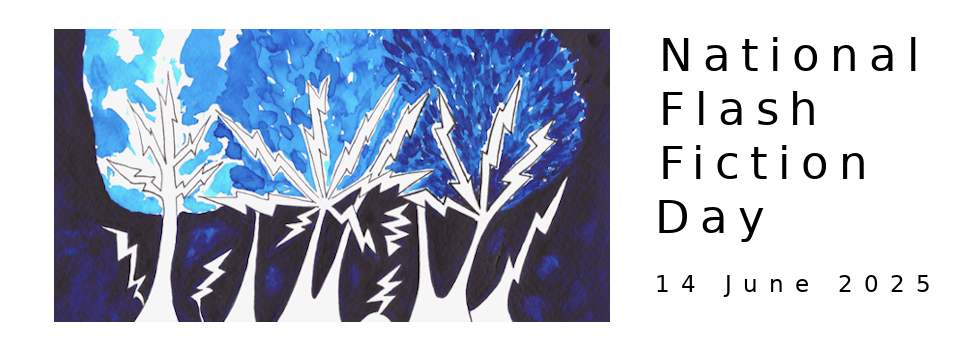
 Farhana Khalique is a writer, voiceover artist and teacher from London. Her stories are forthcoming or have appeared in the National Flash Fiction Day Anthology 2021, Leicester Writes Short Story Prize Anthology 2020, Reflex Fiction and more. Farhana has been shortlisted for The Asian Writer Short Story Prize, and she has won a Word Factory Apprentice Award. She is also the editor of Desi Reads and a submissions editor at SmokeLong Quarterly. Find Farhana
Farhana Khalique is a writer, voiceover artist and teacher from London. Her stories are forthcoming or have appeared in the National Flash Fiction Day Anthology 2021, Leicester Writes Short Story Prize Anthology 2020, Reflex Fiction and more. Farhana has been shortlisted for The Asian Writer Short Story Prize, and she has won a Word Factory Apprentice Award. She is also the editor of Desi Reads and a submissions editor at SmokeLong Quarterly. Find Farhana 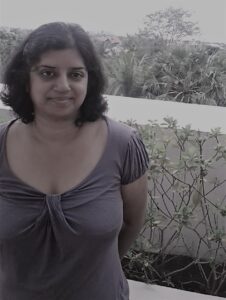 Anita Goveas is British-Asian and based in London. She’s on the editorial team at Flashback Fiction, an editor at Mythic Picnic’s twitter zine, and she’s an editor for the FlashFlood. She is one of the teachers on Dahlia Publishing’s 2021 ‘A Brief Pause‘ writer’s development programme. Her debut flash collection Families and Other Natural Disasters was published by Reflex Press in Sept 2020. Find her at
Anita Goveas is British-Asian and based in London. She’s on the editorial team at Flashback Fiction, an editor at Mythic Picnic’s twitter zine, and she’s an editor for the FlashFlood. She is one of the teachers on Dahlia Publishing’s 2021 ‘A Brief Pause‘ writer’s development programme. Her debut flash collection Families and Other Natural Disasters was published by Reflex Press in Sept 2020. Find her at  Johanna Robinson is based near Liverpool, UK, and has been writing short fiction for around five years. Her work has been featured in various magazines and anthologies, including SmokeLong, Reflex Press and Mslexia. In 2020, she won the TSS Cambridge Prize for Flash Fiction and the Bath Flash Fiction Award, and in 2019 Ad Hoc Fiction published her novella-in-flash Homing, which follows a Norwegian Resistance family in the Second World War. More of her work can be found at
Johanna Robinson is based near Liverpool, UK, and has been writing short fiction for around five years. Her work has been featured in various magazines and anthologies, including SmokeLong, Reflex Press and Mslexia. In 2020, she won the TSS Cambridge Prize for Flash Fiction and the Bath Flash Fiction Award, and in 2019 Ad Hoc Fiction published her novella-in-flash Homing, which follows a Norwegian Resistance family in the Second World War. More of her work can be found at  Dan Crawley is the author of the novella Straight Down the Road (Ad Hoc Fiction, 2019) and the short story collection The Wind, It Swirls (Cowboy Jamboree Press, 2021). His writing appears in a number of journals and anthologies, including JMWW, Lost Balloon, The North American Review, SmokeLong Quarterly: The Best of the First Ten Years 2003-2013, Wigleaf, Quarterly West, and Atticus Review. He is a recipient of an Arizona Commission on the Arts creative writing fellowship. Also, he is a two-time Best Small Fictions nominee, a two-time Best of the Net nominee, a Pushcart Prize nominee, and appears on the Wigleaf Top 50 longlist (2019, 2021). His work won a Bath Flash Fiction Award 2019 Novella-in-Flash highly commended prize. Recently, he has been a Contributing Editor for Best Microfiction and a Little Patuxent Review fiction reader. Find him at
Dan Crawley is the author of the novella Straight Down the Road (Ad Hoc Fiction, 2019) and the short story collection The Wind, It Swirls (Cowboy Jamboree Press, 2021). His writing appears in a number of journals and anthologies, including JMWW, Lost Balloon, The North American Review, SmokeLong Quarterly: The Best of the First Ten Years 2003-2013, Wigleaf, Quarterly West, and Atticus Review. He is a recipient of an Arizona Commission on the Arts creative writing fellowship. Also, he is a two-time Best Small Fictions nominee, a two-time Best of the Net nominee, a Pushcart Prize nominee, and appears on the Wigleaf Top 50 longlist (2019, 2021). His work won a Bath Flash Fiction Award 2019 Novella-in-Flash highly commended prize. Recently, he has been a Contributing Editor for Best Microfiction and a Little Patuxent Review fiction reader. Find him at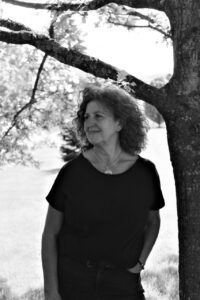 Jupiter Jones grew up on the north-west coasts of Cumberland and Lancashire. The first was wild and secretive, the second trashy and jaded; she loved them both and they haunt her writing. Following a brief spell in London to complete a PhD in Spectatorial Embarrassment at Goldsmiths, she now lives in Wales and writes short and flash fictions. She is the winner of the Colm Tóibín International Prize, and her work has been published by Aesthetica, Brittle Star, Fish, Scottish Arts Trust, and rejected by many, many others. Her novella-in-flash The Death and Life of Mrs Parker was shortlisted in the Bath 2021 competition and will be published by Ad Hoc Fiction later this year, and Lovelace Flats was runner up in the Reflex Press novella competition and will be published in 2022.
Jupiter Jones grew up on the north-west coasts of Cumberland and Lancashire. The first was wild and secretive, the second trashy and jaded; she loved them both and they haunt her writing. Following a brief spell in London to complete a PhD in Spectatorial Embarrassment at Goldsmiths, she now lives in Wales and writes short and flash fictions. She is the winner of the Colm Tóibín International Prize, and her work has been published by Aesthetica, Brittle Star, Fish, Scottish Arts Trust, and rejected by many, many others. Her novella-in-flash The Death and Life of Mrs Parker was shortlisted in the Bath 2021 competition and will be published by Ad Hoc Fiction later this year, and Lovelace Flats was runner up in the Reflex Press novella competition and will be published in 2022. 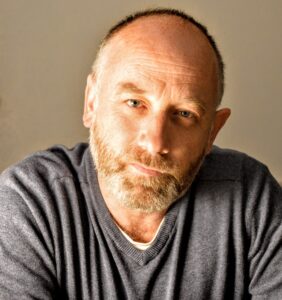 Tom O'Brien is an Irishman living in London. His Novella-in-Flash Straw Gods is published by Reflex Press, and his Novelette-in-Flash, Homemade Weather, with Retreat West. His work has been Pushcart and Best Microfictions nominated, and he is the winner of the 2021 NFFD NZ Best Microfiction. His flash fiction and short stories can be found in print in various anthologies such as Blink-Ink and Bath Flash Fiction (forthcoming) as well as many sites around the web including Ellipsis Zine, Reflex, Spelk and 50-Word Stories. He’s on Instagram and twitter @tomwrote and has a class on Skillshare called Introducing the Novella-in-Flash. His website is
Tom O'Brien is an Irishman living in London. His Novella-in-Flash Straw Gods is published by Reflex Press, and his Novelette-in-Flash, Homemade Weather, with Retreat West. His work has been Pushcart and Best Microfictions nominated, and he is the winner of the 2021 NFFD NZ Best Microfiction. His flash fiction and short stories can be found in print in various anthologies such as Blink-Ink and Bath Flash Fiction (forthcoming) as well as many sites around the web including Ellipsis Zine, Reflex, Spelk and 50-Word Stories. He’s on Instagram and twitter @tomwrote and has a class on Skillshare called Introducing the Novella-in-Flash. His website is 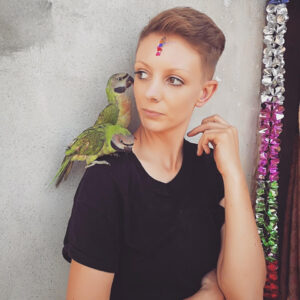 Eleanor Walsh is a PhD graduate from the University of Plymouth. She lives in Cornwall where she works as an English tutor and creative editor. Her novellas 'Birds with Horse Hearts', set in Nepal, and 'Stormbred', set in Cornwall, are available from Ad Hoc Fiction.
Eleanor Walsh is a PhD graduate from the University of Plymouth. She lives in Cornwall where she works as an English tutor and creative editor. Her novellas 'Birds with Horse Hearts', set in Nepal, and 'Stormbred', set in Cornwall, are available from Ad Hoc Fiction.